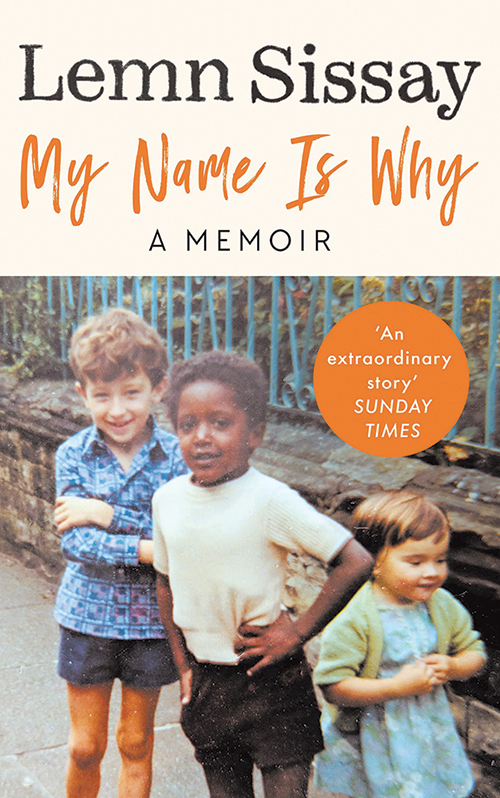
My Name Is Why
Reviewed by Harvey Gillman
August 1, 2021
By Lemn Sissay. Canongate Books, 2020. 224 pages. $24/hardcover; $16/paperback; $13.29/eBook.
“At fourteen I tattooed the initials of what I thought was my name into my hand,” writes Lemn Sissay, author of the memoir My Name Is Why. “The tattoo is still there but it wasn’t my name. It’s a reminder that I’ve been somewhere I should never have been. I was not who I thought I was. The Authority knew it but I didn’t.”
A memoir is a witness; an autobiography is a journey of self-discovery. This memoir is special. It is the story of a boy put into care briefly by his Ethiopian mother in England and fostered by a very strict White Seventh Day Adventist family. He is rejected as a young adolescent and becomes a rebel against an overbearing local authority but is continually protected at a distance by an understanding social worker. By the end of the book, Norman Greenwood rejects this name given to him by the foster family who has turned against him, and instead becomes Lemn Sissay, the child proud to rediscover his Ethiopian roots and his birth mother. Above all, he learns that his birth mother had intended to put him into care for only a short time, and when she tried to get him back, she was fobbed off with excuses by the authority who was supposed to care.
The story is a search for love and a search for identity. It is told in several different layers. There is the child who came to love his foster family in spite of the fact that they rejected him and even refused to see him. There is the child who wanted to be accepted but was mocked for the color of his skin. Tattooing a name upon his skin was both a transgressive act and a desire to know who he was, even if that identity was later discovered to be inauthentic.
As the child becomes an adult and a famous poet, chancellor of the University of Manchester in the UK, and media star, he looks back with pity and anger at the treatment meted out to him and to other children in care. Evidence of this treatment appears in the documents finally given to him by social services as he moved towards independence, which reveal the comments of social workers and agencies of the state, and in letters from his birth mother, whose requests for his return were spurned. Each of the chapters begins with a poem written by Sissay, which offers another perspective into the already multi-layered narrative.
To a certain extent, poetry was a saving grace for him. It was the place where the imagination was allowed to roam: “In finishing a poem I felt the same sense of being as I had in church. It was a discovery, a freedom.” One act of kindness is remembered: the gift of a book of poems given to him at the age of 14 by the deputy headmistress of his high school. Being a poet was part of his emerging identity. When given a psychological test, he was asked whether he was a tree in a forest or a tree on a hill. He replied that he was a poet tree. For this he was judged as being uncooperative and ill-disciplined.
What comes out of this journey is also a sense of compassion for outcasts of all sorts. Sissay sees the link between racism and poverty, as well as the contrast between the life of the imagination and the grinding oppression of systems whose job is to deal with those who do not fit in. This recognition and the passionate search for truth are what give power to his writing. This search is an open-ended one, demanding that secrets assail his life no more. His great discovery is that each name given in his mother’s language has a particular meaning: “Lemn means Why.” The questions he leaves us with are “why?” and therefore, “why not?”
Secrets are the stones
That sink the boat
Take them out, look at them
Throw them out and float.
Harvey Gillman was for 18 years outreach secretary for Britain Yearly Meeting. He has written on the Quaker movement, spirituality, mysticism and language, and led workshops and spoken widely on these themes. His latest work, Epiphanies: Poems of Liberation, Exile and Confinement, was published in March 2021.


